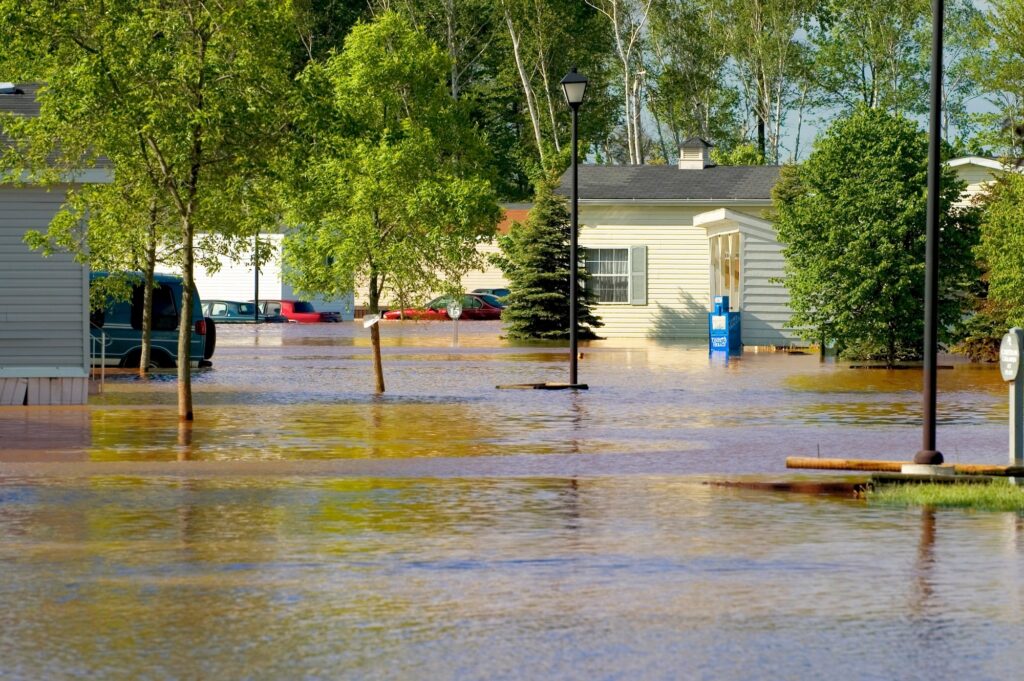Flooding is one of the most frequent and costly natural disasters in the United States, according to the Federal Emergency Management Agency (FEMA). What makes floods especially dangerous is that they can strike almost anywhere, whether you live near the coast, along a river or even in a seemingly dry area. Floods have many causes and can occur anywhere in the country, making flood insurance an important consideration for homeowners.
Floods can be triggered by a wide range of events, including:
- Storm surges in hurricane-prone areas
- Flash flooding, caused by periods of intense rainfall
- Mudslides, caused by long, heavy rain periods on a hill or mountainside
- Snowmelt, caused by the still-frozen ground unable to absorb excess water
- Ice jams, which are formed when an ice chunk flowing in a river or stream blocks, dams or narrows passageways, causing overflow
- Urban development, such as new construction and/or ground paving, which alters the topography by not allowing the land to drain properly
Flooding might seem like a distant threat, until it isn’t. In fact, just a couple of inches of water in your home can quickly turn into a costly nightmare, damaging drywall, flooring, furniture and electronics.
According to FEMA, a single inch of floodwater can cause about $25,000 worth of property damage.
If water isn’t removed quickly, harmful mold can develop, posing health risks to occupants. In some cases, flooding can impact the livability of a home. With flood damage costs projected to rise as the climate warms, it is crucial for homeowners to have flood insurance to protect against unforeseen flooding losses.
What Does Flood Insurance Cover?
A standard homeowners insurance policy does not cover damages from flooding, and therefore, a separate flood policy is needed to cover losses to your property caused by flooding, including:
- Structural damage
- Furnace, water heater and air conditioner damage
- Flood debris clean-up costs
- Floor surface (carpeting and tile) damage
- Electrical and plumbing systems
You can also purchase a flood insurance policy to cover the contents of your home, such as furniture, collectibles, clothing, jewelry and artwork.
Keep in mind that there is typically a 30-day waiting period before coverage starts, so it’s important not to wait until a storm is approaching to purchase a policy.
Federal Disaster Assistance
Federal disaster assistance is only available if the president of the United States formally declares a disaster. Even if you are eligible for disaster assistance, it is often a loan you have to repay with interest.
Cost of Coverage
The cost of flood insurance can vary depending on various factors, such as the home’s location and unique features. However, rates through the National Flood Insurance Program (NFIP) do not differ from company to company or agent to agent.
Most policies purchased through the NFIP have coverage limits of $250,000, and if a flood causes too much damage, you may not have enough to rebuild or repair your home. Alternatively, private flood solutions may provide higher coverage limits and broader coverage options.
Contact us today to determine your premium and recommended coverage levels.
Who Needs Flood Insurance?
While flood insurance is a smart choice for any homeowner, it is especially vital for those living in flood-prone areas. Consider purchasing if:
- You live near rivers, coastal regions or low-lying land
- Your house is in a designated flood zone
- Your mortgage is financed by a lender that requires flood insurance
But here is the thing, flooding doesn’t just happen in high-risk zones. In fact, the National Flood Insurance Program (NFIP) reports that about one-third of all flood insurance claims come from low- to moderate-risk areas. That means even if you are not near a major body of water, you are not necessarily in the clear.
Urban development, new construction, and changes in drainage patterns can all increase your flood risk over time. So even if your property seems safe now, it might not stay that way. Flood insurance offers peace of mind—and financial protection—when the unexpected happens.
Let Us Help You Secure Proper Coverage
Floodwaters have the power to damage not only your home and sense of security, but also your financial future. Contact us today for flood insurance solutions to protect against your risks, or for more information on flood insurance, including premium costs, levels of coverage and the flood risk for your area.
























